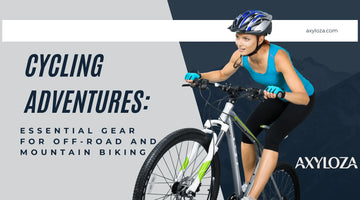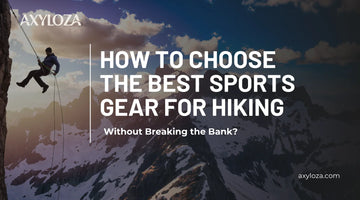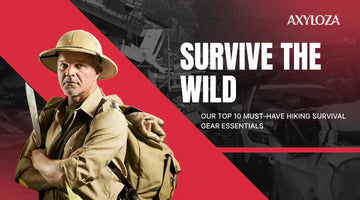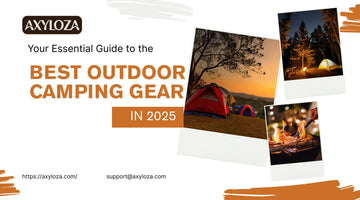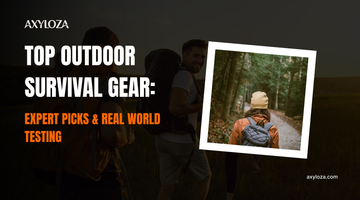Exploring trails, forests, and rugged landscapes on two wheels is an adventure like no other. Off-road riding, also known as mountain biking, combines thrill, endurance, and exploration, making it one of the most rewarding outdoor sports.
But to enjoy it fully and safely, having the right gear matters as much as the ride itself. From selecting durable adventure bicycles to choosing the right clothing, equipment, and accessories, every item plays a crucial role in enhancing performance, comfort, and safety.
This guide breaks down the core bicycling gear essentials for off-road and mountain biking, the equipment, clothing, and tools that can make rides both fun and safe. Whether you’re a beginner testing your limits or a professional looking to refine your setup, understanding the essentials will improve your overall cycling experience.
Adventure Bicycles: Choosing the Best Bikes for Mountain Biking
The starting point of every cycling adventure is the bicycle itself. When selecting the best bicycles for mountain biking, you want strength, durability, and efficiency all packed into one machine. Unlike road bikes, mountain bikes are built with heavier frames, wider tires for grip, and suspension systems that absorb shocks from rough terrain.
When evaluating bicycles, the frame type is key. Hardtail mountain bikes come with suspension only in the front, making them lighter and suitable for smoother trails. While full-suspension bikes provide comfort and control for intense descents on rocky paths, they often cost more.
When choosing a mountain bike, it’s wise to test different sizes to match body geometry. The right frame size improves control while reducing fatigue. Entry-level bikers can start with affordable hardtails, while enthusiasts aiming for challenging trails may find full-suspension setups worth the investment.
Essential Cycling Kit: What You Really Need Before Hitting the Trails

Before stepping on the trail, assembling an essential cycling kit ensures both confidence and preparedness. Key basics include a helmet, gloves, padded shorts, repair tools, and hydration packs. These items might seem small individually, but together, they form the foundation of riding comfort and safety.
A kit doesn’t end with clothing. Lights, spare tubes, and multitools should always be part of your checklist. A small tire pump fits neatly into a backpack and can save you from long walks back home.
Hydration often makes the difference between an enjoyable ride and an exhausting struggle. A camelback-style hydration pack works better than water bottles on bumpy roads, as it allows for drinking without breaking momentum.
Mountain Biking Helmet and Protective Gear: Safety First
A mountain biking helmet is non-negotiable. More than just an accessory, it protects you in the event of slips, tumbles, or crashes common on trails. When scouting for the best mountain biking helmets, prioritize lightweight options with good ventilation and extended rear coverage. Many modern helmets also include adjustable visors to shield from glare, ensuring clearer vision ahead.
Along with helmets, full-body mountain bike protective gear like elbow and knee pads provides extra confidence, particularly on aggressive downhill rides. Padded jackets are also recommended if your trails involve rocky drops. Riders new to off-road cycling should not underestimate the advantage of layering on protection to minimize injuries from unexpected falls.
Mountain Biking Shoes and Pedals: Grip, Power, and Performance
Footwear plays a vital role in transmitting power efficiently. Mountain biking shoes differ from regular sports shoes as they feature stiff midsoles that prevent energy loss while pedaling.
Clipless pedals paired with the best shoes for mountain biking create superior control by locking your feet into place, preventing accidental slips. However, many beginners start with flat pedals before gradually moving to clipless systems for enhanced performance.
Grip, traction, and comfort define the choice of footwear. While stiff soles help with energy transfer, a balance of rigidity and cushioning is essential for long rides. An accidental slip on rocky terrain can cause injuries, so investing in high-quality shoes is not just about performance—it’s about safety.
What to Wear?
Clothing choice defines both comfort and safety. Mountain biking shorts with built-in padding soften the ride and reduce friction against the saddle. Breathable fabrics that wick sweat away enhance comfort on long journeys.
For cooler temperatures or terrains, the best mountain biking pants add coverage and protection against scratches or weather conditions. Elastic waistbands and stretchable designs make movements much easier when maneuvering around tight trails.
A good pair of gloves enhances the adventure by reducing vibrations and preventing blisters. Searching for the best mountain biking gloves will lead to brands offering both breathability and strong grips. Glove padding also provides soft cushioning for rough rides, ensuring hands remain fresh even after extensive hours.
On-the-Go Cycling Essentials: Tools, Hydration, and Trail Packs

Going on an outdoor trail means being away from immediate repair shops. That’s where carrying an essential cycling kit with items such as multitools, puncture repair kits, spare inner tubes, and small pumps becomes crucial.
Hydration systems, whether bottles or packs, are top cycling gear essentials. They help maintain stamina throughout the ride. Compact trail backpacks can fit basic survival items, including lightweight snacks, first-aid kits, and even rain jackets for unpredictable weather.
Efficient packing ensures freedom of movement. Always keep critical tools easily accessible and store smaller accessories in organized compartments. Prepared cyclists face fewer interruptions, ensuring smoother journeys.
Bonus Gear: Tech, Navigation, and Lighting for Off-Road Adventures
Modern biking is enhanced by technology. GPS devices and smartphone mounts help riders stay on course. Headlights and taillights aren’t only for night rides—they also improve visibility on shaded forest trails.
Lighting systems, along with reflective strips, form a reliable part of mountain biking essential gear. Especially in dusk or dawn rides, lights act as safety signals to others while preventing accidents due to poor vision.
Action cameras are also popular among riders wanting to record progress and share experiences. While not mandatory, they bring another layer of fun and utility to the adventure.
Final Thoughts
Mountain biking is a sport that blends nature, thrill, and endurance. By investing in the right cycling essentials, riders ensure every journey is safer and more enjoyable.
Choosing a sturdy bike, picking the right mountain biking gear, dressing appropriately, and carrying compact repair tools, every step of preparation enhances the experience. With preparation and the right attitude, every off-road ride becomes both memorable and rewarding.
If you’re looking to upgrade or buy quality equipment that fits all these needs, explore Axyloza for reliable gear, great options, and expert recommendations to support your next cycling adventure.
FAQs
Q1. What is mountain biking?
Mountain biking is an off-road cycling sport focused on trails, hills, and rugged terrains, requiring special bikes and protective equipment for safety, performance, and control.
Q2. What are the 5 must-have cycling accessories?
Essential biking accessories are a helmet, gloves, hydration pack, multitool, and repair kit. Together, these ensure safety, performance, and preparedness on all mountain trails.
Q3. What gear should you wear for mountain biking?
Riders should wear a helmet, padded shorts or pants, gloves, and durable shoes. Optional extras include knee and elbow guards, protective jackets, or eyewear for trail protection.
Q4. What does every cyclist need?
Every cyclist needs a helmet, gloves, a hydration source, a repair kit, and comfortable shorts or pants. These basics guarantee both safety and endurance across varying trail conditions.
Q5. What equipment do I need for mountain biking?
Essential equipment includes a durable mountain bike, a helmet, gloves, padded shorts, hydration, a pump, and a multitool. Optional extras include clipless shoes, protective guards, and navigation tools.
